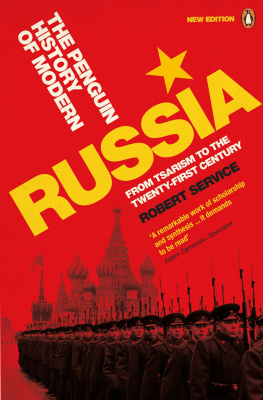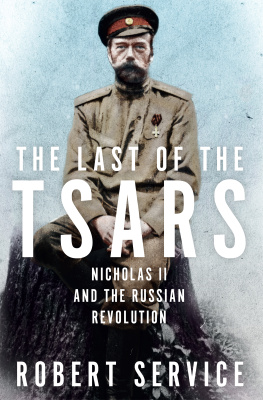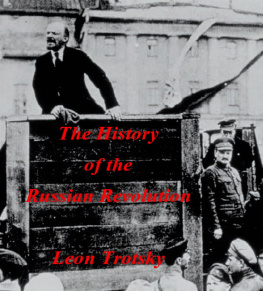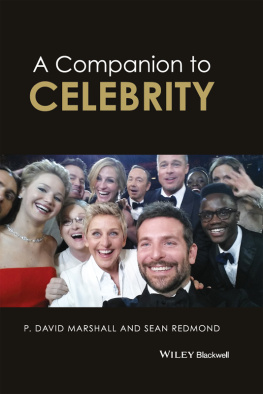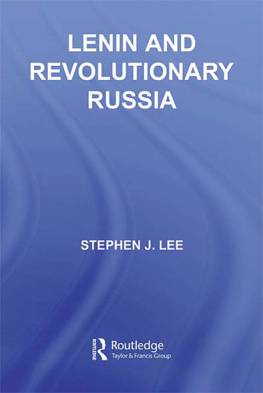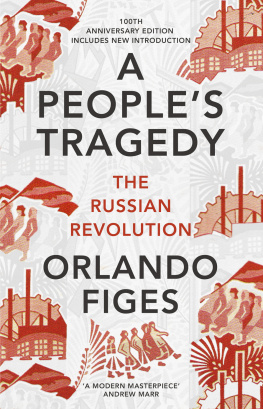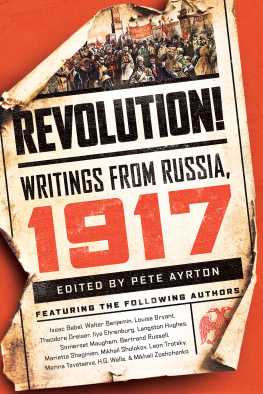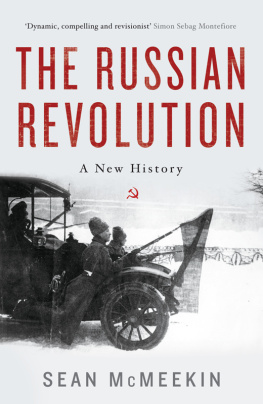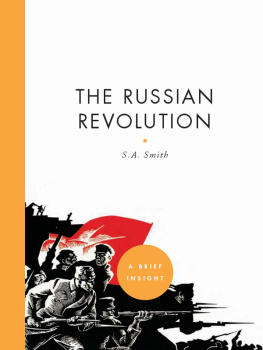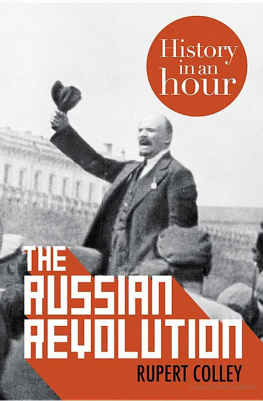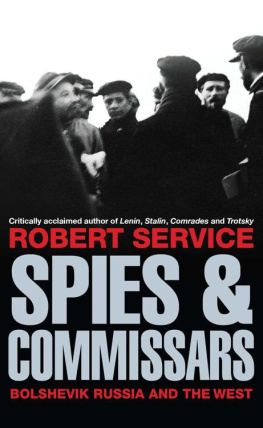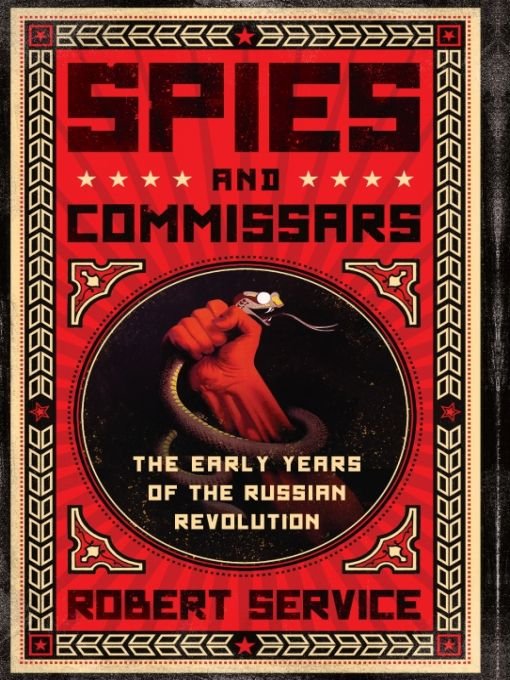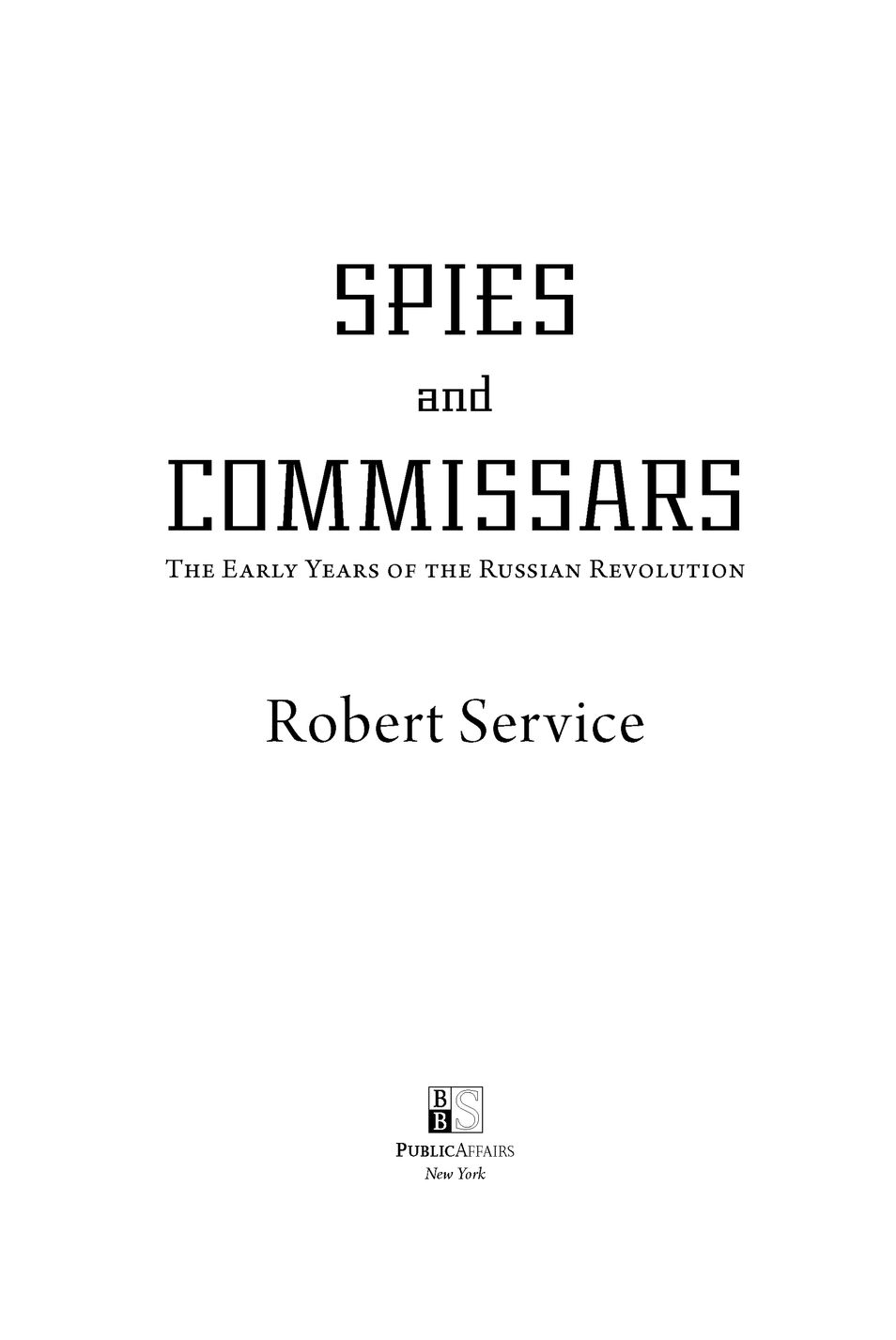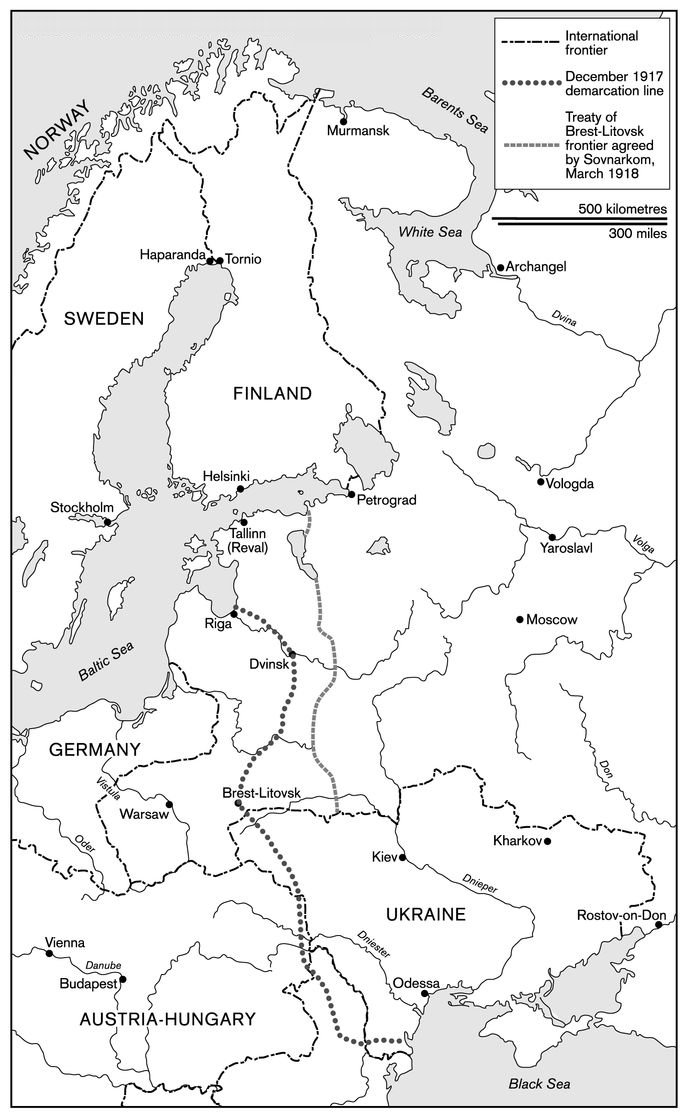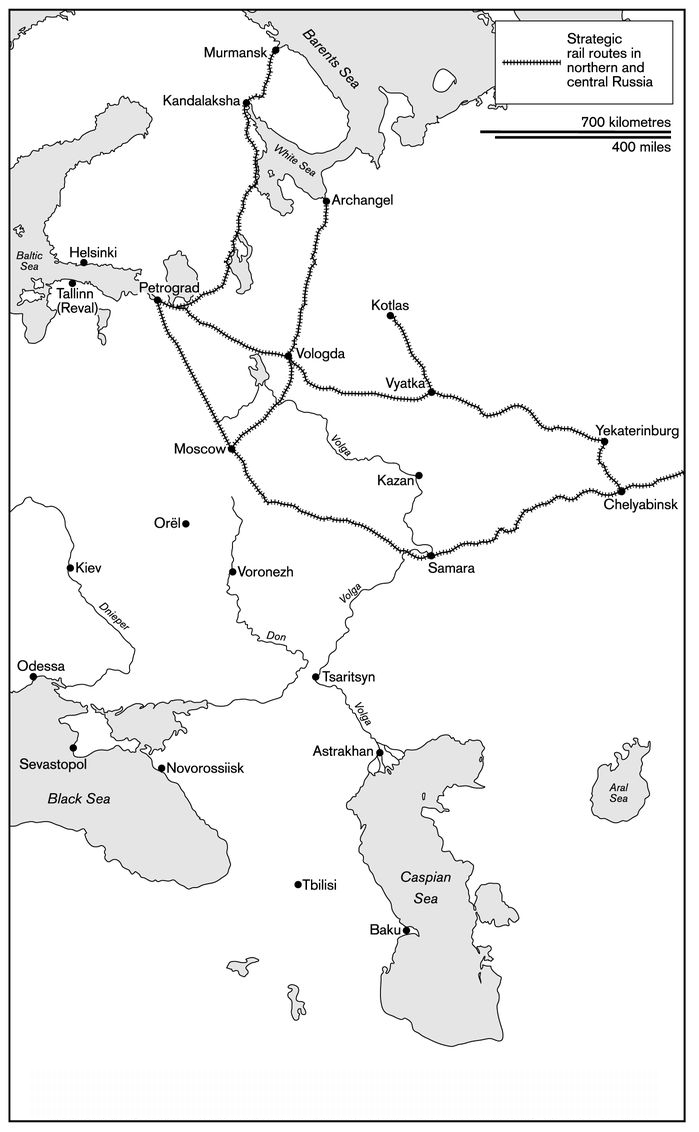Table of Contents
ALSO BY ROBERT SERVICE
The Bolshevik Party in Revolution:
A Study in Organisational Change
Lenin: A Political Life
Volume One: The Strengths of Contradiction
Volume Two: Worlds in Collision
Volume Three: The Iron Ring
The Russian Revolution, 19001927
A History of Modern Russia:
From Tsarism to the Twenty-First Century
Lenin: A Biography
Russia: Experiment with a People
Stalin: A Biography
Comrades: Communism: A World History
Trotsky: A Biography
To Adele, with love and thanks
LIST OF ILLUSTRATIONS
Illustrations can be found after page 218
1. Lenin in deep thought. ( Getty Images)
2. Trotsky in his Red Army uniform. ( Getty Images)
3. An encounter between German and Russian troops in the neutral zone. (Hoover Institution Archives)
4. Living quarters of the peace talks delegations at Brest-Litovsk. (Hoover Institution Archives)
5. The peace talks at Brest-Litovsk before Trotsky joined them. (Topfoto)
6. Sir George Buchanan. (National Portrait Gallery)
7. David Francis. (St Louis Public Library)
8. Joseph Noulens. (Roger-Viollet)
9. Cheka leaders Felix Dzerzhinski and Yakov Peters. ( Getty Images)
10. Leaders of the Peoples Commissariat of Foreign Affairs abroad in Berlin in 1922. (Roger-Viollet/Rex)
11. Bukharin. (By kind permission of Harry Shukman)
12. John Reed. ( Getty Images)
13. Louise Bryant. ( Getty Images)
14. Sylvia Pankhurst. (By kind permission of Harry Shukman)
15. A 1919 anti-Spartacist and anti-Bolshevik German poster depicting a Spartacist murdering a family. ( Getty Images)
16. A poster offering 10,000 marks for the arrest of Karl Radek. (By kind permission of Harry Shukman)
17. The Spartacists get themselves organized in January 1919. (Hoover Institution Archives)
18. Andr Marty. (By kind permission of Harry Shukman)
19. Kamenev. (By kind permission of Harry Shukman)
20. Bla Kun. ( Getty Images)
21. Robert Bruce Lockhart. (Corbis)
22. Moura Budberg. ( The Estate of Tania Alexander)
23. Sidney Reilly. (Alamy)
24. Clare Sheridan and son. ( Getty Images)
25. A Ukrainian recruitment poster for the Red Cavalry. ( Getty Images)
26. A White Army regiment operating in Siberia in early 1920. ( Getty Images)
27. An anti-Bolshevik Cossack unit during the Civil War. ( Getty Images)
28. General Anton Denikin. ( Getty Images)
29. Sir Paul Dukes. (Hoover Institution Archives)
30. Agent ST25, also known as Paul Dukes, in one of his operational disguises. (Hoover Institution Archives)
31. Food pails being carried for distribution during the Civil War in 1919. ( Getty Images)
32. Turin workers rise against capitalism in 1920. (By kind permission of Harry Shukman)
33. Leaders and militants of the Communist Party of Great Britain in the early 1920s. (By kind permission of Harry Shukman)
34. The Italian delegation to the Second Comintern Congress in July 1920. (By kind permission of Harry Shukman)
35. Arthur Ransome. (Brotherton Collection)
36. Yevgenia Shelepina. (Brotherton Collection)
37. Willie Gallacher. (By kind permission of Harry Shukman)
38. Tanks on the streets of Glasgow during the strikes of early 1919. (By kind permission of Harry Shukman)
39. Red Army POWs in Finnish captivity. (By kind permission of Harry Shukman)
40. Session of the Congress of the Peoples of the East in Baku in September 1920. (By kind permission of Harry Shukman)
41. Leading delegates to the Third Comintern Congress ( JuneJuly 1921) gather under the joint statue of Marx and Engels. (By kind permission of Harry Shukman)
42. The Soviet delegation to the talks at Genoa and Rapallo in April 1922. ( Getty Images)
43. Joseph Stalin speaking in mourning for Lenin, January 1924. ( Getty Images)
RUSSIA AT WAR AND PEACE, 1917-1918
SOVIET RUSSIA AND ITS NEIGHBOURS DURING THE CIVIL WAR AND FOREIGN MILITARY INTERVENTION, 1918-1919
PREFACE
Many people have given generous help with this book. Its basic material on all aspects of Russia and the West in the revolutionary period comes from the Hoover Institution Archives, and I am grateful for the support of the Sarah Scaife Foundation in enabling me to work in Stanford on the project over two whole summers. My thanks also go to Hoover Institution Director John Raisian and Senior Associate Director Richard Sousa for the enthusiasm they have shown for the investigations carried out at Hoover. The exceptional conditions for research and writing there were enhanced by the active co-operation of all the staff in the Archives, and I am especially beholden to Linda Bernard, Carol Leadenham, Lora Soroka, Zbig Stanczyk, Brad Bauer and Lisa Miller. Their efficiency and expertise in suggesting boxes and folders unknown to me and in helping with the declassification of valuable files are appreciated. In that respect I must acknowledge my debt to Julian Evans, UK Consul-General in San Francisco until 2010, who persuaded the UK Foreign and Commonwealth Office to sanction access to some of Robert Bruce Lockharts papers at Hoover.
Scholars in the San Francisco Bay area gave me ideas and discussed aspects of the research: Robert Conquest, David Holloway, Norman Naimark, Yuri Slezkine and Amir Weiner. It was a pleasure to try out some of the ideas for the book with them in convivial circumstances.
In Britain, Roy Giles shared his expertise on intelligence matters and Simon Sebag Montefiore helped to steady my instincts about the books argument and orientation. My literary agent David Godwin has been unfailingly supportive about this project. As usual it was a joy to talk over ideas with him. My thanks go, too, to Norman Davies and Ian Thatcher for answering specific questions. Andrew Cook kindly shared several products of his sleuthing in the UK archives about British intelligence in 1918; Harry Shukman did the same with his copies of British official papers on Georgi Chicherin. I am grateful to both Andrew and Harry as well as to Michael Smith for answering questions on various research topicsand to Angelina Gibson for assistance with the Bulgarian language. Thanks are due to John Murphy of the British Broadcasting Corporation, who alerted me to material in Oxford on Allied politics and intelligence while we worked together on a radio programme about the British plot of 1918. Richard Ramage, Administrator and Librarian of the Centre of Russian and Eurasian Studies, was patient and helpful with my frequent enquiries about our library holdings at St Antonys College.


